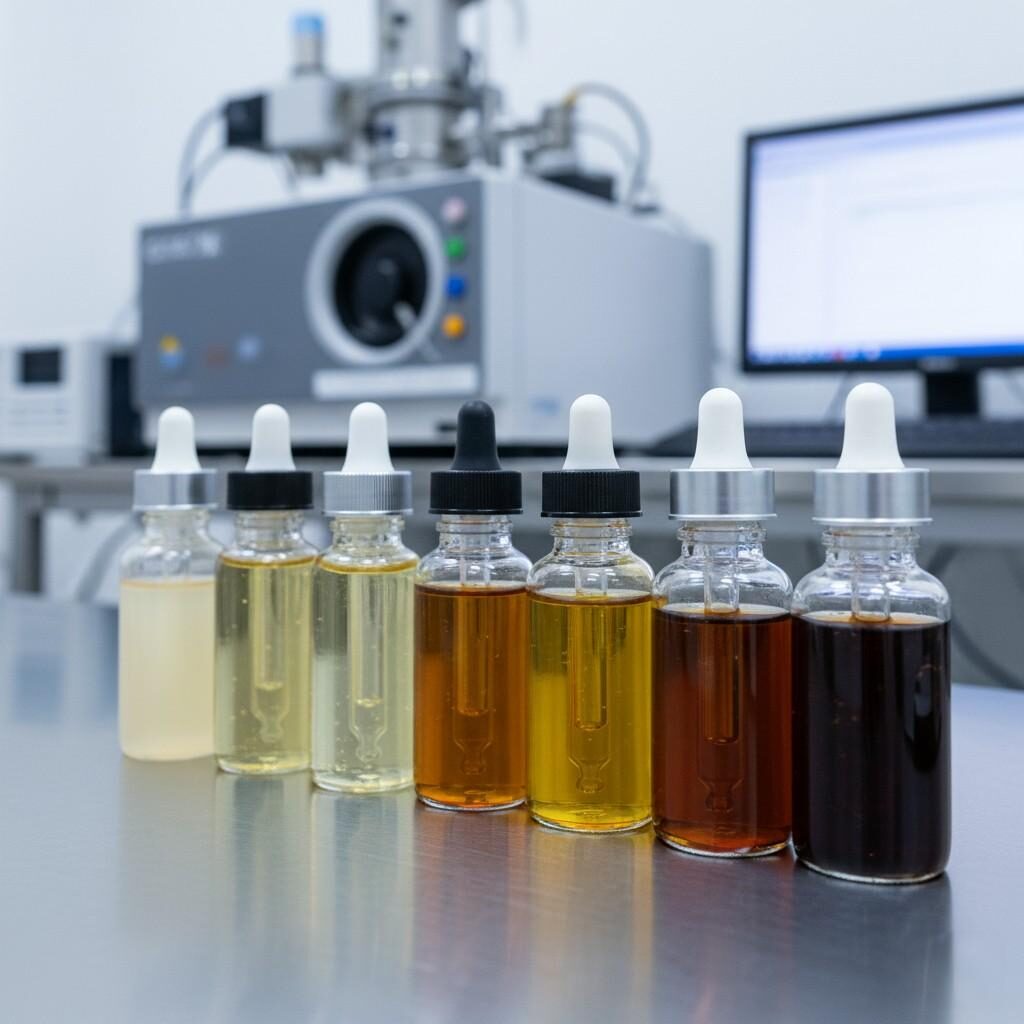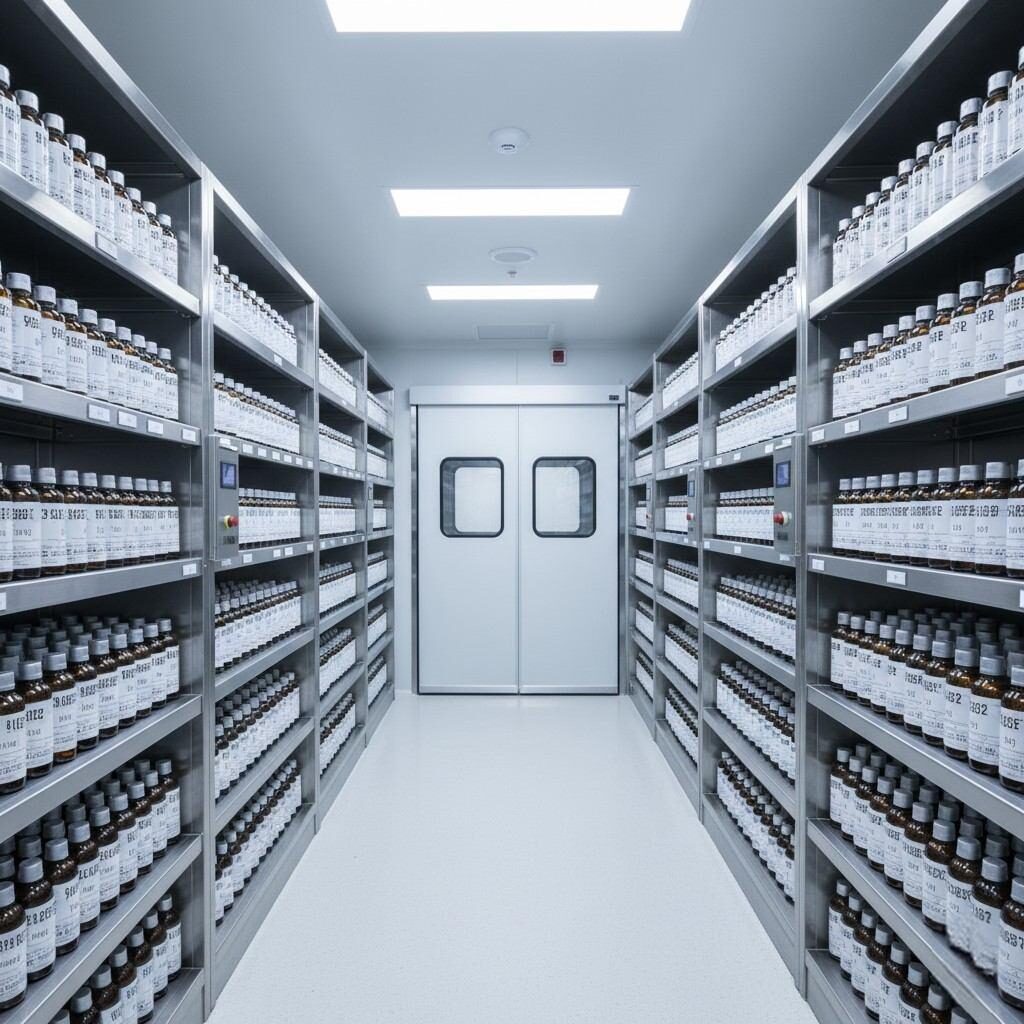Author: R&D Team, CUIGUAI Flavoring
Published by: Guangdong Unique Flavor Co., Ltd.
Last Updated: Nov 20, 2025

E-Liquid Discoloration Study
In the modern vape industry—where consumer judgment happens in seconds—visual appearance is one of the first indicators of perceived quality. Even if a formula is technically safe and stable, unexpected discoloration can instantly be interpreted as oxidation, contamination, poor-quality flavoring, or improper storage.
In B2B manufacturing, it triggers another layer of concern:
Understanding why vape flavors discolor and how to prevent or reverse the problem is essential for brand survival, regulatory compliance, and sensory consistency.
This article delivers a deep technical breakdown of discoloration pathways, ingredient incompatibilities, reactions under heat and light, and proven R&D solutions. It also clarifies when discoloration is benign—and when it signals real chemical instability.
This guide is written for:
Let’s explore the hidden chemistry inside every bottle.
Discoloration refers to any unintended color shift in a flavor concentrate or finished e-liquid. The most common color changes observed include:
| Color Shift | Typical Cause | Severity |
| Pale yellow | Early oxidation of aldehydes, esters | Mild |
| Bright yellow | Heat-induced conversion reactions | Moderate |
| Amber/brown | Polymeric oxidation products | Severe |
| Pink/red | Metal contamination, aldehyde reactions | Moderate–Severe |
| Cloudy/opaque | Ingredient incompatibility or microbial contamination in PG/VG (very rare but possible) | Severe |
Discoloration can occur within hours, days, or months depending on:
While some natural color shifts are harmless, others indicate a real breakdown of flavor compounds—and therefore flavor performance.
Flavor aldehydes such as vanillin, ethyl vanillin, cinnamaldehyde, and citral are extremely oxidation-prone. When exposed to oxygen or light, they form quinone-like structures, causing yellow, orange, or brown discoloration.
According to the U.S. National Library of Medicine, aldehydes readily oxidize into acids and complex polymers under mild conditions.
Even microscopic traces of iron, copper, or tin can catalyze dramatic discoloration. Metal ions accelerate oxidative polymerization reactions, especially in citrus, bakery, and creamy flavors.
According to complementary studies in food chemistry, metal ions act as “redox catalysts” that dramatically speed up degradation reactions.
Acidic or slightly alkaline components can shift the equilibrium of various flavor molecules, especially:
For example, esters can undergo acid- or base-catalyzed hydrolysis, changing both color and aroma intensity.
Yes—the same chemistry responsible for browning in food can occur in some flavor systems when aldehydes encounter amines, sugars, or nitrogen-containing molecules.
Wikipedia notes that Maillard reactions produce yellow-to-brown pigments called melanoidins—pigments that can form even without heat under the right conditions.
This is a frequent cause of brown discoloration in dessert, coffee, tobacco, and creamy profiles.
During shipping or warehouse storage, e-liquids can experience:
Heat accelerates nearly every type of degradation reaction: oxidation, ester breakdown, terpene rearrangement, and polymerization.
A recent industry report confirms that heat and UV exposure are the two largest factors affecting e-liquid degradation rate.
Low-grade PG or VG may contain:
These impurities can cause yellowing as they oxidize.

GC-MS E-Liquid Analysis
Some discoloration is not caused by oxidation, but by direct incompatibility between flavor ingredients.
Aldehydes and ketones are highly reactive toward acids. Mixing vanillin with acids such as malic, citric, or tartaric leads to:
A lemon-custard flavor turning bright yellow after 2–3 weeks.
Terpenes (limonene, pinene, etc.) degrade into peroxides and colored byproducts.
Fruit flavors with citrus or tropical notes turning orange.
This causes brown or amber coloration.
Caramel or tobacco flavors turning very dark in warm storage.
High ethanol with VG can create haze and mild yellowing.
UV light breaks down aromatic rings and terpenes, producing pigments.
Cheap plastic bottles allow slow oxygen ingress.
Shelf life degradation is inevitable.
If discoloration appears, manufacturers should follow a structured diagnostic process.
Compare:
Check for:
Identifies volatile oxidation products.
Measures oxidation severity.
Detects chromophore formation at 280–450 nm.
Finds contamination or incompatibilities.
This structured approach ensures discoloration is diagnosed scientifically, not guesswork.

E-Liquid Stability Comparison
Below are industry-standard solutions used by professional vape flavor manufacturers.
Test every incoming ingredient for:
Add:
Replace unstable ingredients with stabilized analogues.
Cold storage slows nearly all degradation reactions.
Use:
This alone can reduce discoloration by 50–70%.
Test flavors under:
Then compare with fresh sample using GC–MS and sensory panels.
When harmful discoloration is detected, reformulation and stability intervention are required.
Cause: Aldehyde + acid incompatibility
Fix: Stabilized aldehyde, neutralized acid
Cause: Terpene oxidation + heat exposure
Fix: UV-blocking bottle + terpene derivative replacement
Cause: Maillard-type browning
Fix: Removal of amino compounds + improved cold-chain storage
Professional flavor suppliers use:
This ensures that color, aroma, and stability remain consistent throughout production, storage, transport, and end-user use.
Cold chain logistics—used in pharmaceutical and food industries—can dramatically improve flavor stability.
Benefits include:
Cold chain is especially beneficial for:
Brands that adopt cold-chain storage often see:
Discoloration issues may look like simple color problems—but in reality, they reveal deep chemical interactions inside the formula. With precise formulation, careful ingredient selection, improved packaging, and stable manufacturing processes, manufacturers can eliminate most discoloration risks.
Premium flavor suppliers use scientific methods, GC–MS verification, ingredient compatibility knowledge, and cold-chain practices to ensure that vape products stay visually appealing and chemically stable.
If your e-liquid brand struggles with discoloration, our technical team can help you solve the problem permanently.

E-Liquid Cold Chain Storage
We specialize in high-stability, discoloration-resistant flavor systems for e-liquids.
If you need:
✔ Technical exchange
✔ Formula troubleshooting
✔ Stability testing
✔ Free sample development
✔ OEM/ODM flavor customization
Contact Us Anytime:
📧 Email: [info@cuiguai.com]
🌐 Website: [www.cuiguai.com]
📱 WhatsApp: [+86 189 2926 7983]
☎ Phone: [+86 0769 8838 0789]
Your product quality is our priority.
The business scope includes licensed projects: food additive production. General projects: sales of food additives; manufacturing of daily chemical products; sales of daily chemical products; technical services, technology development, technical consultation, technology exchange, technology transfer, and technology promotion; biological feed research and development; industrial enzyme preparation research and development; cosmetics wholesale; domestic trading agency; sales of sanitary products and disposable medical supplies; retail of kitchenware, sanitary ware and daily sundries; sales of daily necessities; food sales (only sales of pre-packaged food).
Copyright ©Guangdong Unique Flavor Co., Ltd.All Rights Reserved. Privacy Policy